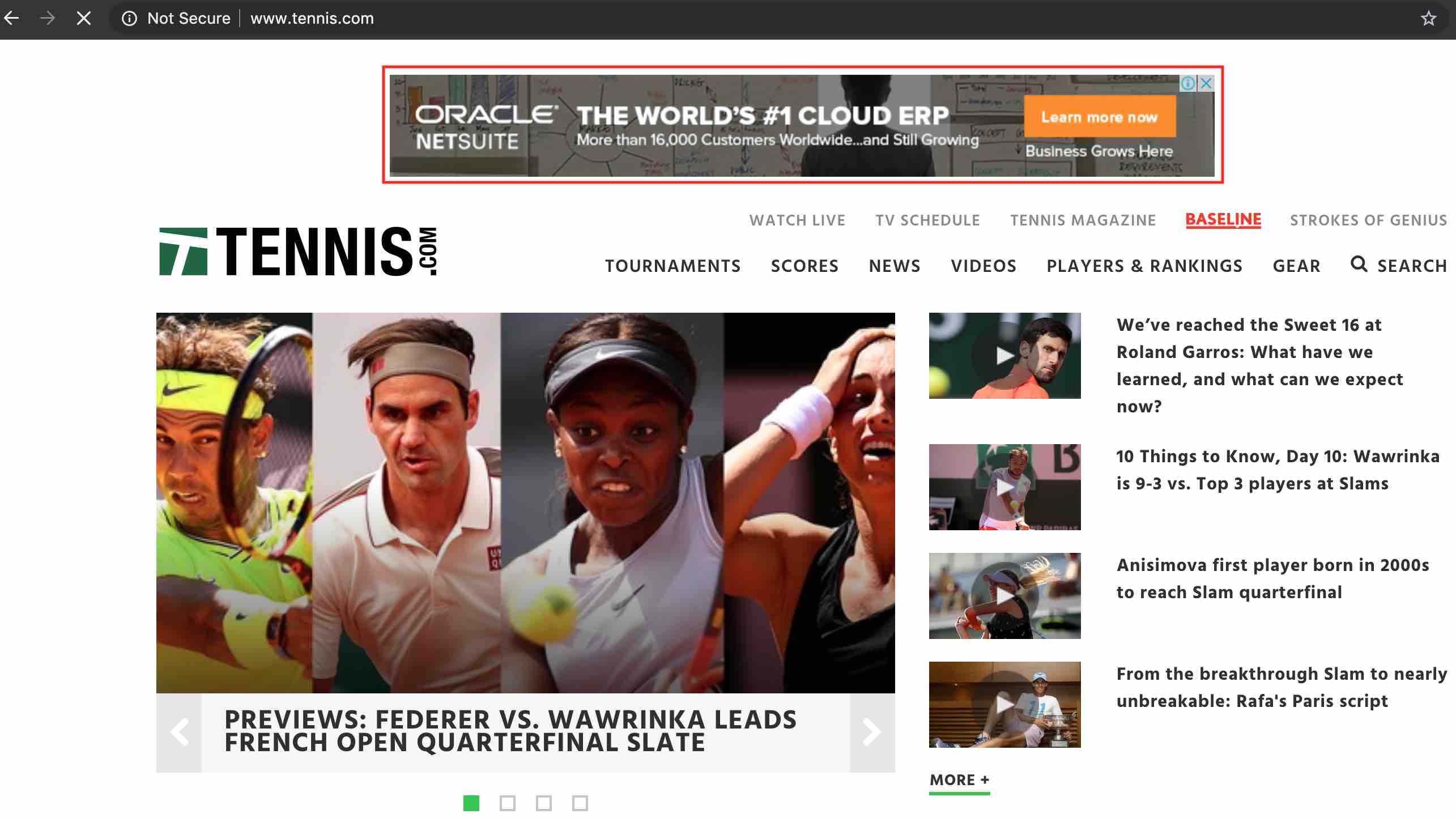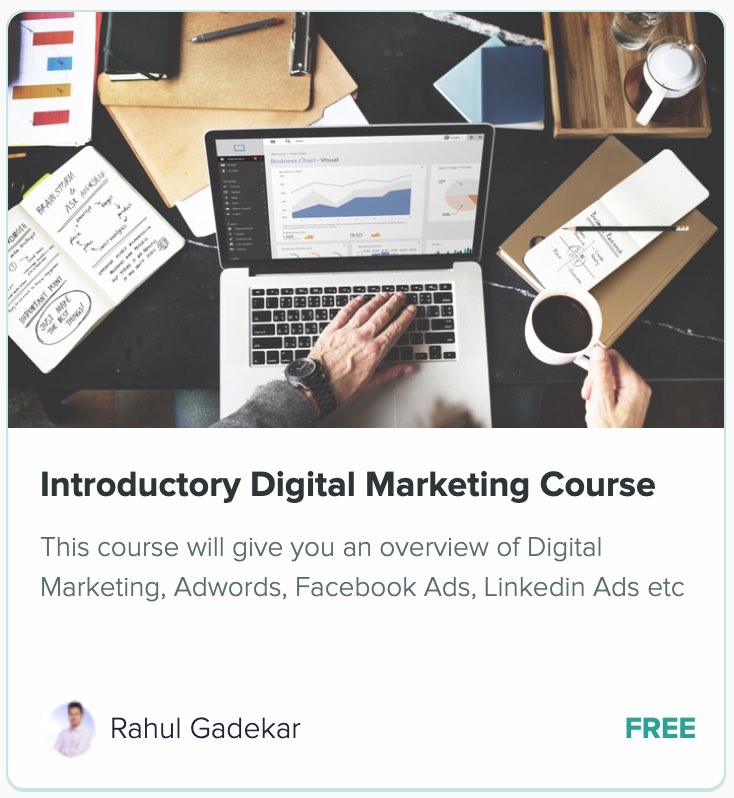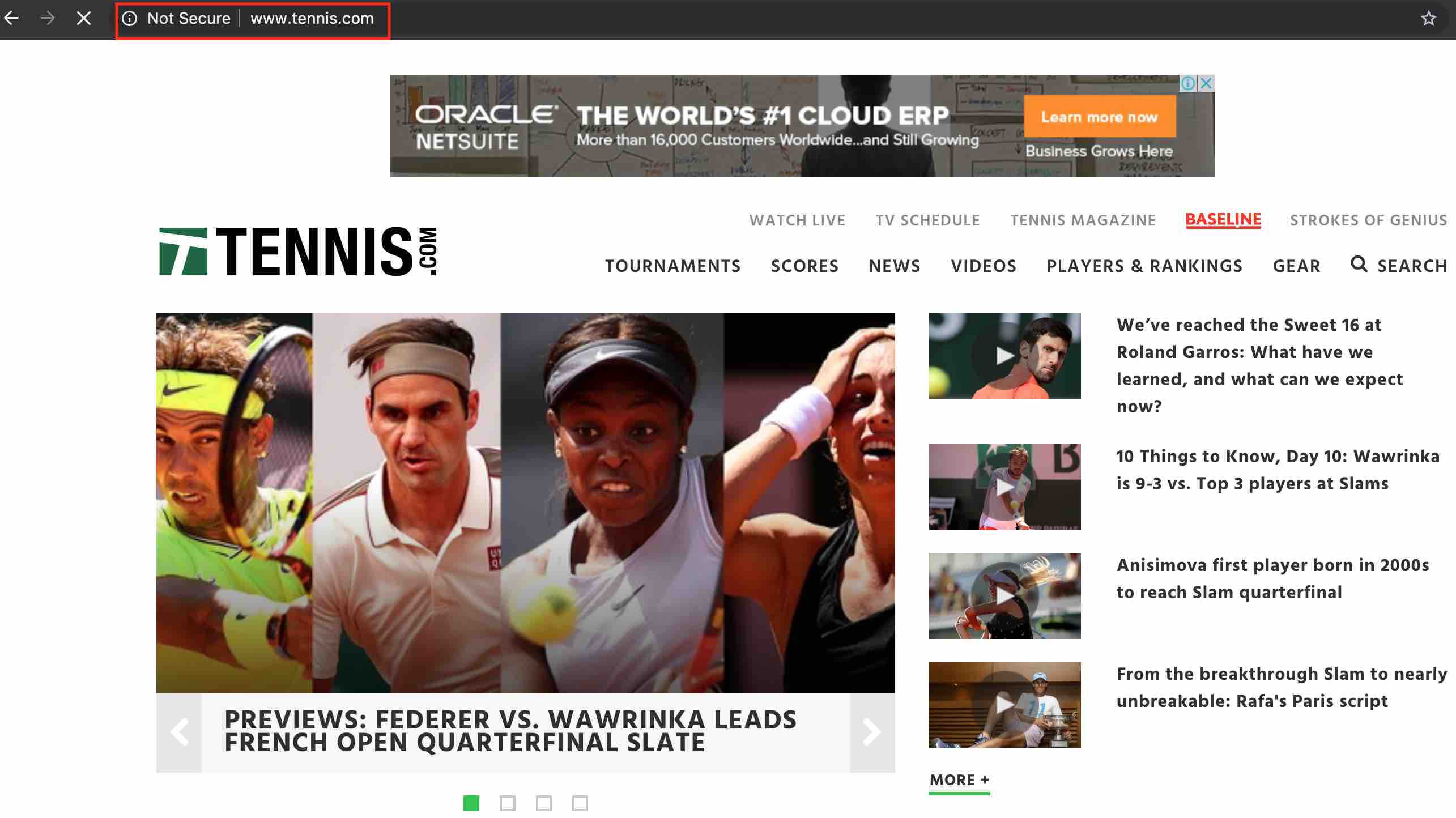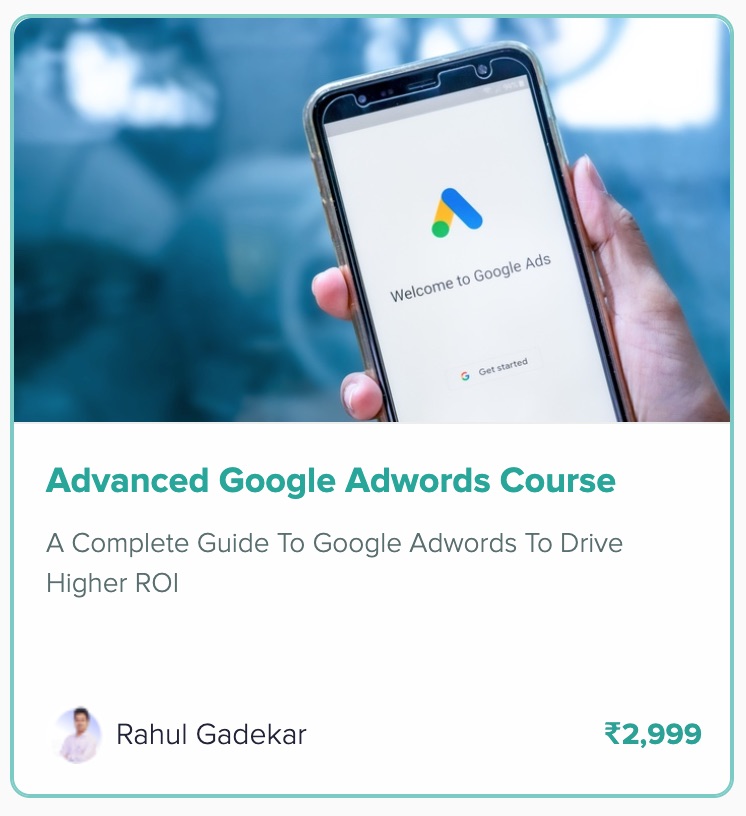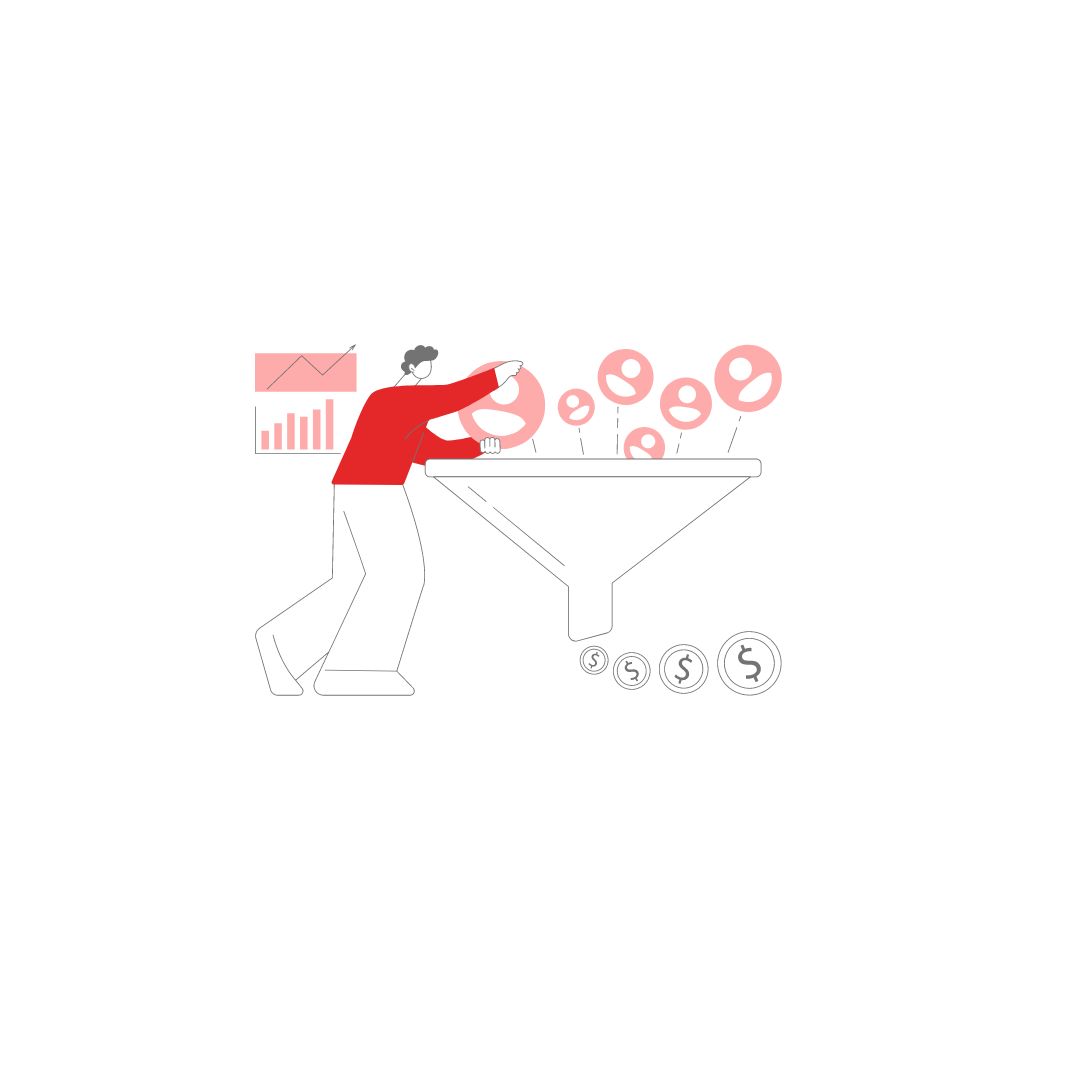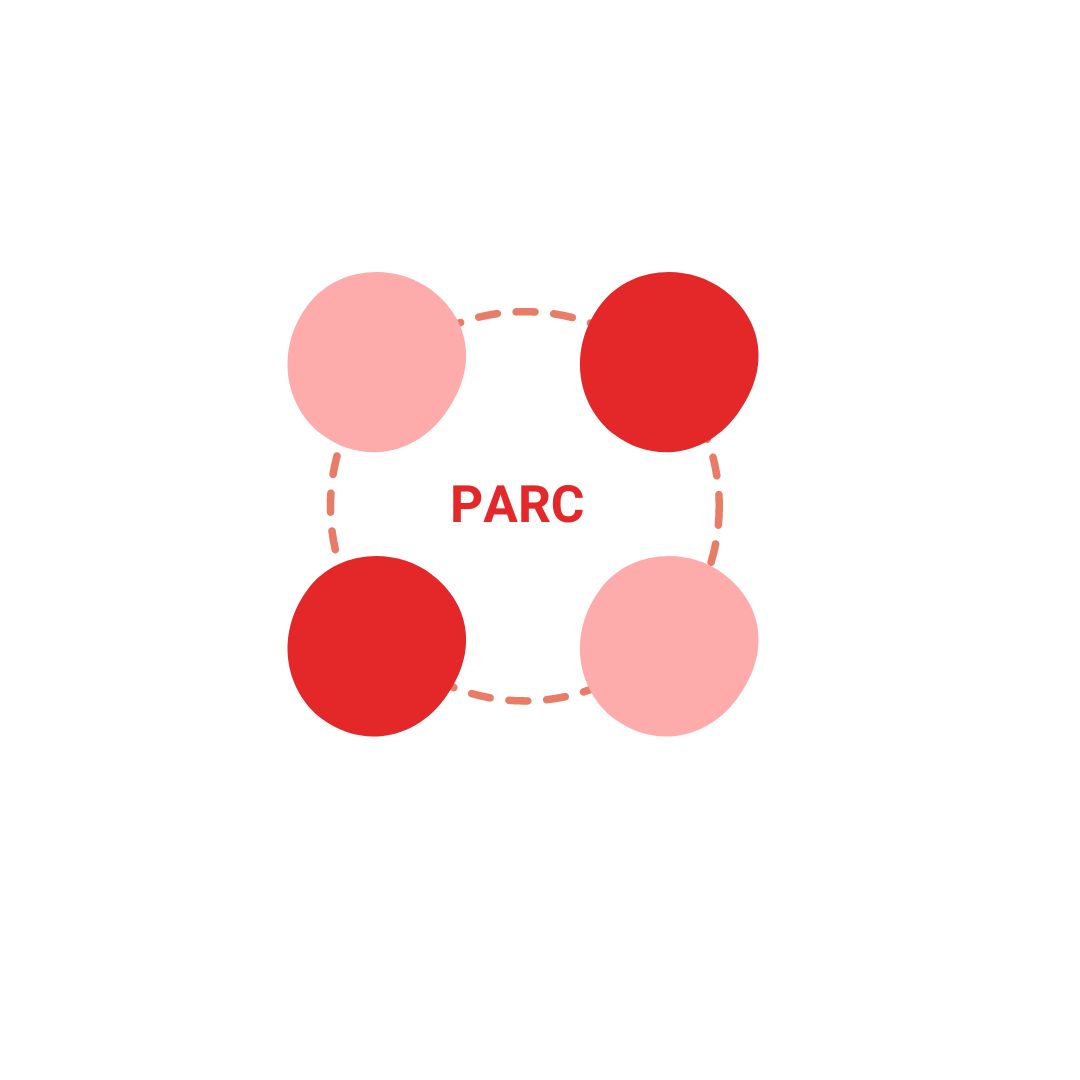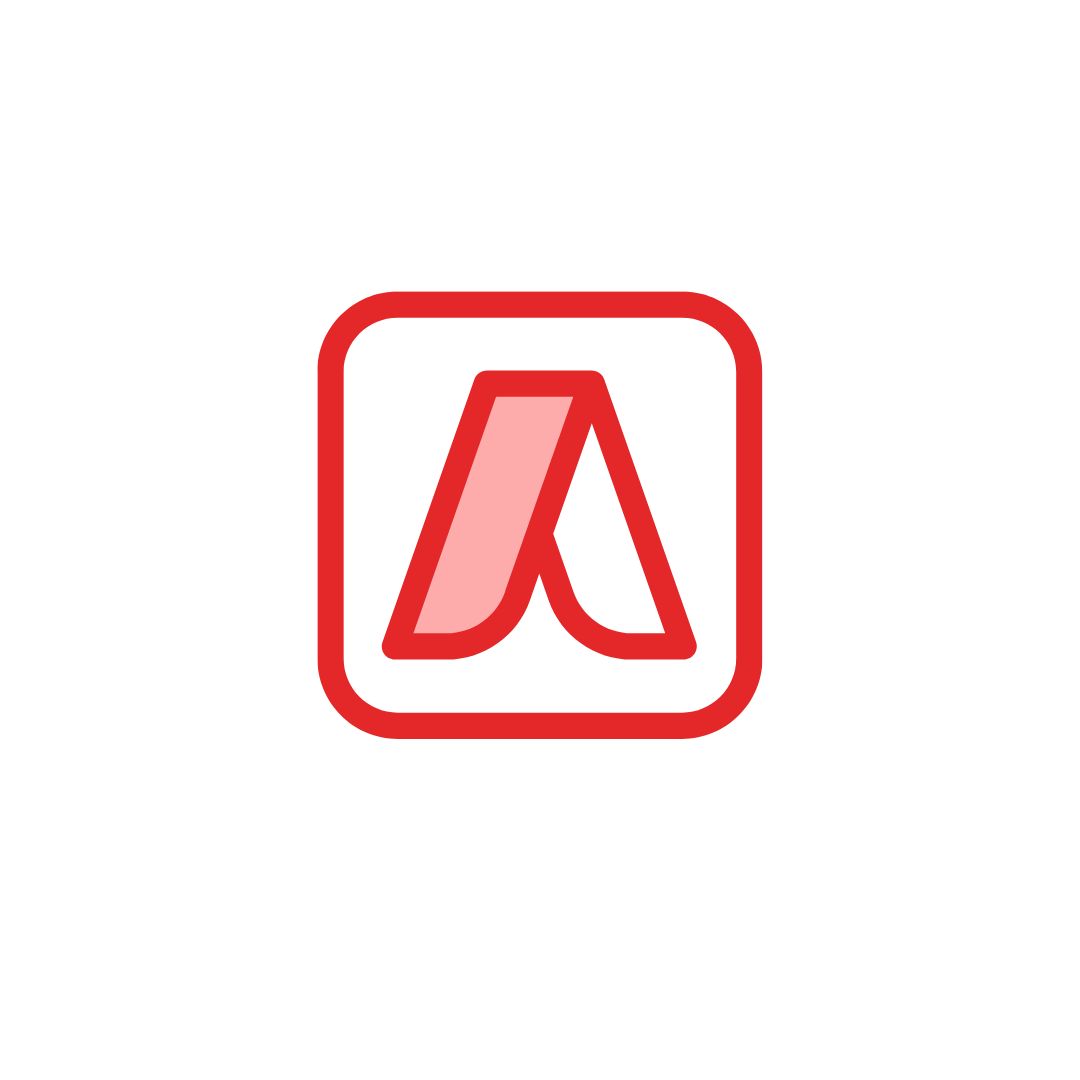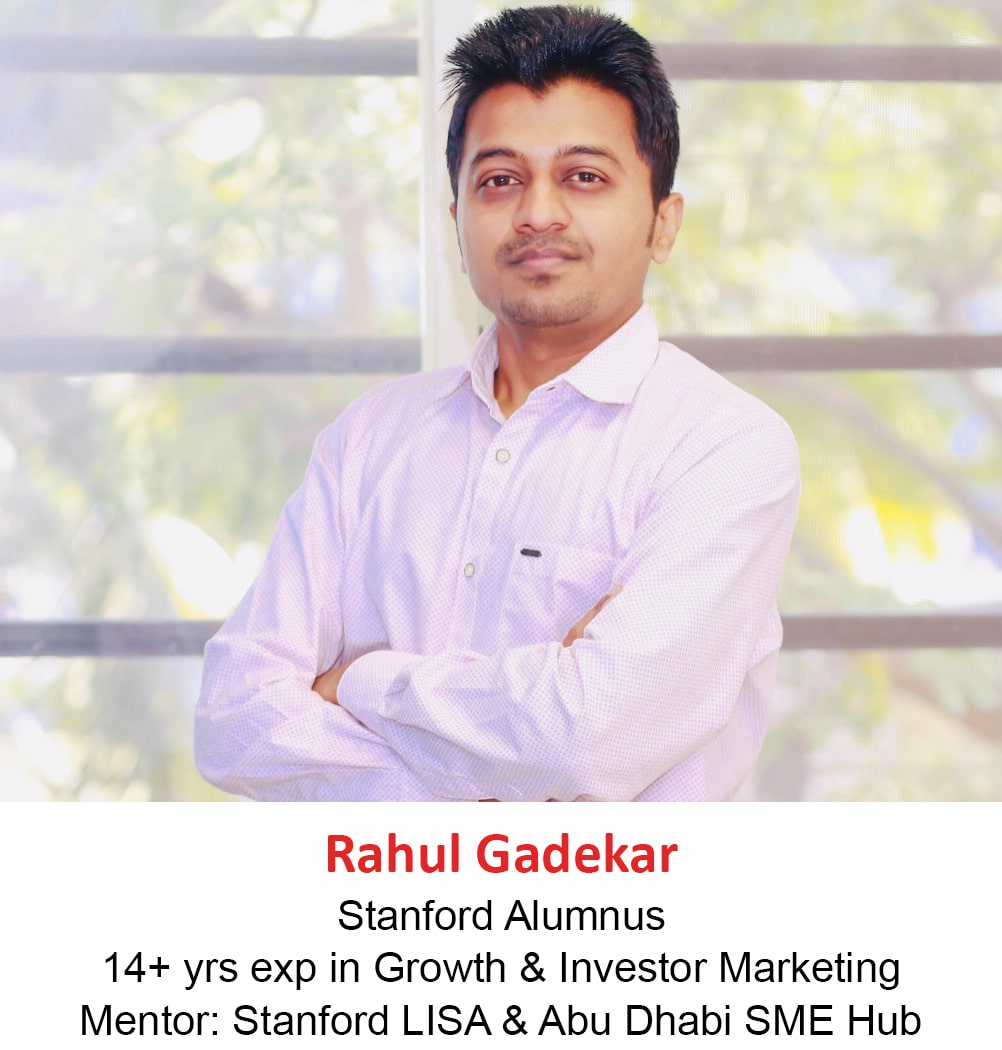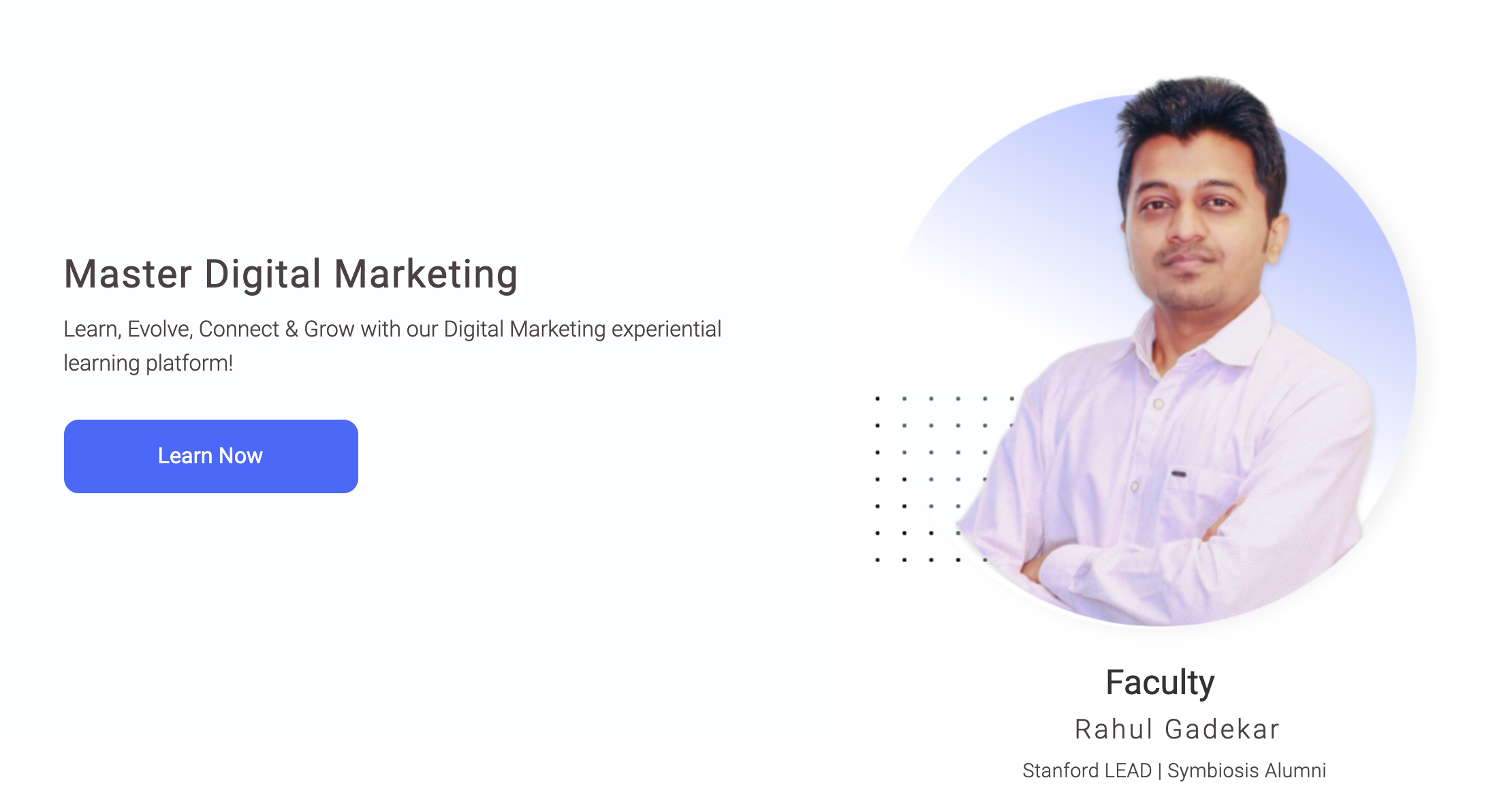If you are new to Digital Marketing, it is important for you to understand the common terms used in Digital Marketing. These terms are widely used across digital domain including Search, Display, Social, Email etc.
So let’s understand Terminologies Used in Digital Marketing in detail!
Advertiser
An advertiser is someone who is advertising or spending money to promote his products or services on Digital media. Eg: In the example below, you can see, Oracle is advertising on Tennis.com website. So in this scenario Oracle is an advertiser
Take the Introductory Digital Marketing Free Course by Rahul Gadekar
Publisher
A publisher is someone who is serving advertiser’s ad on his website. Publishers are content based websites who’s revenue model is advertising. Few examples of publishers include ndtv.com, toi.com etc.
In the example below, Tennis.com is the publisher.
Impression
Impression is when an ad is triggered on a website. When an ad is triggered once, it would be called as 1 impression. If it has been triggered 10 times, then it would be called as 10 impressions.
CPM (Cost Per Thousand)
CPM is called as cost per thousand (M is the roman numeral for 1000). CPM is the amount an advertiser pays for 1000 impressions of an ad.
For Eg: if a publisher charges $15 CPM, and you ad is shown around 5000 times, then you would pay $15×5, which is $75.
CPM model is used by advertisers when they want to create awareness about their brand/product/service, where visibility is more important than clicks or leads or sales.
CPC (Cost Per Click)
CPC is called as cost per click, it is the same as pay per click. CPC is when an advertiser pays basis clicks, in this scenario the impressions don’t matter. For Eg: If your ad is shown 5000 and you receive 100 clicks, where the Avg CPC is $2, then the total cost you pay is $100 x2, which is $200.
The CPC is defined on real time basis and different from keyword to keyword or publisher to publisher.
CTR (Click Through Rate)
CTR is click through rate, which is the percentage of clicks received depending on the no of times the ad was shown. CTR is one of the important terms in Digital Marketing because the more the users you drive to the website, the more the chances of sales/conversions/
Eg: If your ad is shown 1000 times and you receive 100 clicks, then the CTR is 10%
Advanced Google Adwords Course by Rahul Gadekar – Access Now
Conversions
Conversions in digital is an action taken by a user on the website, the action could be filling up a form, purchasing a product, subscribing to the newsletter etc.
In order to measure conversions it is important to setup conversion tracking. Every advertising platform has a separate code which has to be placed on the thank you page of the website.
To understand how to setup conversion tracking in Google Ads, refer article – Google Ads Conversion Guide
Conversion Rate
Conversion rate is the percentage of clicks converted received on the ad. For Eg: if you have received 100 clicks and 5 users have filled up the form, then the conversion rate is 5%.
Advertisers spend a lot of time optimizing their landing pages and their ad communication strategy to improve conversion rates.
CPA (Cost Per Acquisition)
Cost per acquisition (CPA) is the cost spent to acquire one lead or purchase. Eg: If you have spend $500 and have received 10 conversions, then the CPA is 50
CTA (Call to Action)
CTA is a call to action, which is an element placed on the website, which guides users to take specific action. For Eg: Book Now, Buy Now, Apply Now etc, it is usually a text on a button on the website or a display banner ad.
Ad Copy
Ad copy in digital is the ad format with the message which you are advertising. Eg: Any ad on publisher website will be called as ad copy
Landing Page
Landing page is the page on which the user lands after clicking the ad or search result organic link.
Final URL
Final URL is also called as the destination URL or the landing page URL. It is the webpage on which the user lands after clicking a particular link on search or clicking an ad copy
CPV (Cost Per View)
Cost per view is the amount an advertiser pays for a particular view. The cost will depend on publisher basis real time bidding.
View Rate
View rate is the percentage of users who have viewed the video depending on the no of times the video impressions served. For Eg: 100 impressions appear for a video and only 10 views are recorded, this means that the view rate is 10%
Engagement
Engagement is when a user either likes or comments or shares a particular post/content piece. Eg: On a particular facebook post, there are 50 likes, 5 comments and 2 shares, in this case the total engagement is 57
Engagement Rate
Engagement rate is the percentage of people engaged with your content. Eg: You have 1000 users on your page, and around 100 people are engaged with your content, then the engagement rate of the page is 10%
Banner Ad
Banner ad is an image ad which is used on display network. This ad consists of image and text. Few advertisers also try to run banner ads with GIFs to engage with your audience.
Crawler
A crawler is an automated program used by search engines or publishers to crawl the website content. The crawler scans the webpage content which can be used to show results, display content in one place etc.
Every search engine has a crawler eg: Google, Bing, Yahoo etc. Crawlers are also called as “robots” or “spiders” or “bots”. Google’s search engine crawler is called as bot
Indexing
Indexing is saving the content in the database. Once the crawler crawls the content, the content has to be saved in the database so that the web page can be triggered on search. This process of saving the content in the database is called Indexing.
Organic Traffic
Organic traffic is, traffic generated from non paid source which is SEO
Direct Traffic
Direct traffic is, traffic generated through directly typing in the website url in the browser. Eg: Someone types www.rinteractives.com, in the browser itself
Referral Traffic
Referral traffic is, traffic generated from third party website. Eg: rinteractives.com is on just dial and someone comes from JustDial to www.rinteractives.com, in that case it would be considered as referral traffic
Organic Reach
Organic reach is the reach of a post or content or video without a support for paid marketing.
A/B Testing
A/B testing is testing of two different versions for ad copy or landing pages or campaigns etc. A/B testing is used to test which version is performing and then further define your strategy to improve conversions.
Cookie
A cookie is a tag which sends data from a website to devices browser. Cookie helps to remember which pages were viewed, what products were added to cart etc.
SERP
SERP is search engine results pages. SERP are the pages shown by search engine once a keyword is searched by a user.
Ad Network
Ad network is a network of websites and apps where your ads can show. Eg: Google has two big networks, including search and display.
Apart from Google there are other third party networks including Tyro, Komli etc
Bounce Rate
Bounce rate is a term which is used in analytics. Bounce rate is the percentage of visitors who leave the website without visiting another page.
No follow
A NoFollow command communicates to the crawler that the destination web page link should not get the SEO value/equity.
Conclusion
Understanding Digital Marketing terms are very important before you move into learning different aspects of Digital. Once the fundamentals are clear, it becomes easy for one to deep dive in Google Adwords, SEO, Social Media etc. If you have any questions, feel free to ask your questions!
Related Articles
